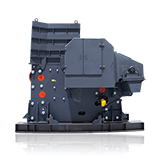Precautions for Operating Stone Crusher in Winter
Winter brings unique challenges to the operation of stone crushers, especially in regions with extremely low temperatures. Proper precautions must be taken to ensure the equipment’s reliability, efficiency, and longevity. This article outlines key measures to address the challenges of stone crusher operation in cold weather.

1. Pre-Startup Inspections
Before starting the stone crusher in cold conditions, conduct a thorough inspection:
- Lubrication System: Ensure the lubricant is suitable for low temperatures. High-viscosity lubricants can thicken and reduce efficiency.
- Belts and Cables: Check for cracks or stiffness caused by freezing. Replace damaged parts immediately.
- Hydraulic Systems: Inspect hydraulic fluids for proper viscosity and contamination.
- Electrical Components: Ensure all connections are secure and free from moisture or ice buildup.
2. Warm-Up Procedures
Cold temperatures can cause metal components to contract, increasing the risk of mechanical failure. Follow these warm-up steps:
- Slow Start: Gradually increase the stone crusher’s speed to allow components to warm up evenly.
- Idle Operation: Let the stone crusher run idle for 10-15 minutes to warm the lubricant and hydraulic fluids.
- Monitor Temperature: Use built-in sensors to ensure critical components reach optimal operating temperatures.
3. Lubrication and Hydraulic Fluids
Proper lubrication is critical in cold weather:
- Use Winter-Grade Lubricants: Switch to low-viscosity lubricants designed for cold climates.
- Heat Storage: Store lubricants in a heated area to maintain their fluidity.
- Hydraulic Fluids: Ensure hydraulic fluids are rated for low temperatures to prevent system failures.
4. Material Handling
Frozen materials can strain the stone crusher:
- Pre-Heat Materials: Use heaters or store materials in a warm area to prevent freezing.
- Avoid Overloading: Frozen materials are harder to crush, so reduce the feed rate to prevent equipment strain.
- Clear Blockages: Regularly check for ice or frozen debris in the feed hopper and crushing chamber.
5. Environmental Considerations
Cold weather can affect the surrounding environment:
- Snow and Ice Removal: Clear snow and ice from the crusher and its working area to prevent accidents.
- Dust Control: Cold air can reduce dust suppression efficiency. Use additional measures to control dust emissions.
- Operator Safety: Ensure operators are equipped with proper winter gear and trained for cold-weather operations.
6. Regular Maintenance
Winter conditions demand increased maintenance:
- Daily Inspections: Monitor belts, bearings, and other components for signs of wear or freezing.
- Cleanliness: Keep the stone crusher free of snow, ice, and debris.
- Post-Operation Care: Drain water from the system and store the crusher in a sheltered area to prevent freezing.
7. Emergency Preparedness
Be ready for unexpected issues:
- Spare Parts: Keep critical spare parts on hand to minimize downtime.
- Heating Equipment: Use portable heaters or insulating blankets to maintain optimal temperatures.
- Emergency Protocols: Train operators to handle cold-weather emergencies, such as hydraulic system failures or power outages.
Operating stone crushers in low winter temperatures requires careful planning and proactive measures. By following these precautions, you can ensure your equipment remains efficient, reliable, and safe throughout the cold season. Proper maintenance, warm-up procedures, and material handling strategies are key to overcoming the challenges of winter operations.







